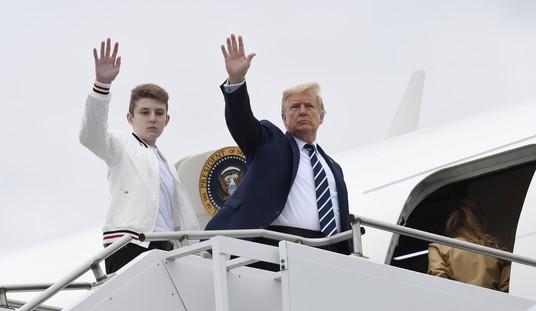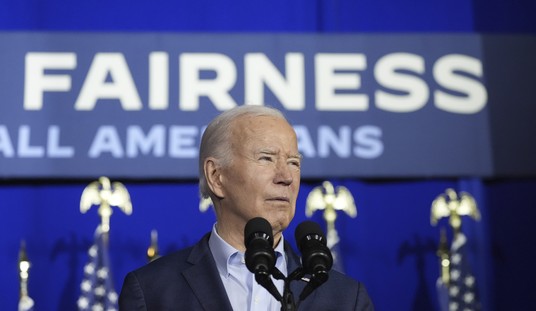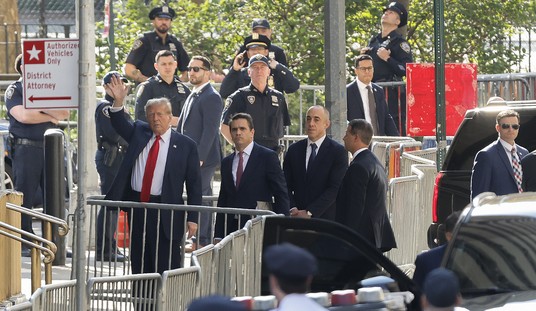Why is Bill De Blasio’s 1988 trip to Nicaragua something New York City voters should consider when casting their ballot for mayor next November? After all, the major issues facing the city are its increasing debt from union contracts; whether businesses will be welcomed and allowed to flourish or be met by increased taxes that cause them to flee the city; and, of course, De Blasio’s commitment to put an end to the successful “stop and frisk” policies used by the city’s police force, which have led to less crime — especially in urban minority areas of the city.
So, why is it even being discussed? I raised the issue myself for the city’s voters in op-eds that appeared in the New York Daily News and the New York Post. Now, two other important articles have appeared that spell out why De Blasio’s defense of his pro-Sandinista activities in the ’80s is important, and worth reconsidering.
The first appears in today’s Wall Street Journal, and is written by their Latin American affairs editor, Mary Anastasia O’Grady. She points out that his old trip “should further enlighten New Yorkers as to the politics of the man who is the front runner in the race.” She points out that by the time he traveled to Nicaragua, the Sandinistas had been in power for almost an entire decade.
By then, any honest observer should have had no doubts about what they were up to.
O’Grady runs through the entire trajectory of the Sandinistas’ so-called accomplishments. For example, in 1980 — a short time after taking power in an armed coup — the Sandinistas assassinated a democratic opponent who had opposed the authoritarian Somoza regime that had been overthrown. They then moved to purge the first “directorate” of all moderate elements, leaving only committed Marxist-Leninists in power. O’Grady notes:
The crackdown that followed was ruthless. Cuban enforcers were brought in to help. Houses, farms, ranches and businesses were confiscated, and the independent media were muzzled. Central planning meant price controls for everyone. Even rural women carrying produce to market were arrested as speculators.
With blunt sarcasm, she asks how De Blasio could not know about this, since, after all, “he had only completed graduate studies of the region” at Columbia University.
She suggests that he nevertheless probably did know the truth, but thought that the “brutality could be explained away with good outcomes,” since to this day he still defends and approves of the Sandinistas. That his comrades “turned out to be greedy totalitarians who stole the spoils of the war for themselves doesn’t seem to matter.”
An even more important, though unfortunately little read, open letter to Mr. De Blasio appeared on the webpage of The New Republic, written by an outstanding American intellectual of the Left, Paul Berman. Paul Berman is the author of major books critical of the Islamists, and in particular he has been the most vociferous of the critics of Tariq Ramadan, the academic so many liberals and leftists regard as a man of moderation who should be taken seriously. Berman has shown him to be a slippery defender of radical Islam.
In his first open letter, titled “Bill de Blasio should Embrace Democratic Socialism in New York City,” Berman tries to establish his leftist credentials with De Blasio, obviously in the hope that he will go on to the second part. It is a silly and foolish choice. He makes it clear that he is a proud democratic socialist, and he argues that democratic socialism once had “an honored place” in the city’s history. To establish that, he goes back decades to the ’30s, ’40s and to the early ’60s, when anti-Communist social democratic unions had some political clout and, he notes, built institutions that lasted, such as cooperative apartment houses.
This is more of Berman’s romanticism, reflected in his early enthusiasm for Occupy Wall Street. It is too cute by half. He must realize that the kind of socialists he remembers and celebrates would be called “social fascists” by the kind of Left that De Blasio and his generation are part of. They have all but disappeared from sight, save for a few intellectuals like Berman who sit alongside him at Dissent magazine. Berman says little about the disastrous economic policies that De Blasio supports and that could bring the city to ruin.
His second open letter, titled “Why De Blasio’s Nicaraguan Work Worries Me,” shows Berman at his best.
Berman reveals just how he, in the same years De Blasio went to Nicaragua, came to learn what the Sandinistas were really about. His powerful article stands as a singular accomplishment, an example of how even a man of the Left, when honestly looking at reality, can ditch his early enthusiasms and think twice about the forces he was supporting.
Berman once was a Sandinista supporter. His first somewhat critical articles actually appeared in Mother Jones, an act for which its then editor, pre-filmmaker Michael Moore, fired Berman from the magazine. Hence Berman begins by writing that the international support for the Sandinistas “was earnest and sincere,” although some was “fanatically arrogant and shrill.” However, Berman is hoping to get De Blasio to read on, so he writes that he knows the future mayor’s “commitment to the Sandinista cause” and reveals that he was once “bold and adventurous and idealistic.” Hence he writes: “I salute you.”
Conservative readers, please do not stop at that paragraph. Berman is getting ready for the kill.
After the Sandinistas lost the the first democratic election in early 1990, which they were forced to hold because of international pressure and because they sought legitimacy for their regime (and never expected to lose), the world, Berman writes, learned about “mass graves, anguished peasants, furious artisans and workers,” all of whom suffered under the rule of the commandantes of the Sandinista Front (FSLN). After their election loss, they quickly robbed the public trough of all its valuables, taking property and money in the treasury to line their own pockets.
Berman notes that even after the truth was out, Bill de Blasio continued to give the FSLN his support, and even now offers only tepid criticisms of their misrule.
De Blasio has, he writes, “never arrived at a proper understanding of the tragedy there,” which makes Berman concerned “about what sort of mayor you might become.” He then proceeds to give a compelling and detailed account of just what he learned in Nicaragua. Months of spending time there forced Berman to give up his old enthusiasms and illusions, and to boldly tell the truth about the hidden Marxist-Leninist agenda of the Sandinistas.
Berman relates how the very areas in which peasants and Indians rebelled against the Somoza dictatorship quickly became the very areas where the populace moved to rebel against the Sandinistas. He writes particularly of that which De Blasio and the other Sandalistas of the day missed:
This was the goal of subjugating every last corner of Nicaraguan life to the dictates of the Sandinista Front, whose own political structure mandated obedience to the nine uniformed comandantes of the national directorate, whose political structure had been assembled, in turn, by Fidel Castro, their hero. These hierarchical commitments ended up wreaking a devastating effect on every last thing the Sandinistas ever did, including the best things.
Berman points out that the much heralded literacy campaign was meant to get the population to become indoctrinated. When Costa Rica offered free textbooks for the schools, the FSLN rejected them, and turned instead to Communist East Germany, which gave them books meant “to promote reverence for the Sandinista Front and a belief in Sandinista ideology.” What they got was “an indoctrination campaign,” one that was badly received, including in Masaya, where both Berman and De Blasio went during their time in Nicaragua.
As for the so-called Popular Church, Berman writes that it had little support among the people and was “a theology of obedience,” while the regular mainstream church “retained a genuine popularity.” The persecution of the church, he writes, “went down badly.” When the barrio of the poor staged a small insurrection, the dreaded minister of the Interior, Tomas Borge, “dispatched troops and tanks to the barrio.” The insurrection was crushed. Cooperatives set up by the peasants to sell their goods were destroyed, and replaced by “state agencies on the advice from the Soviet countries” that were, in addition, notoriously corrupt.
The result was that the poor whom the FSLN supposedly served had their crafts and trades destroyed, even while these same workers “were required to attend Sandinista rallies and chant slogans.” Secret police and block committees took down who came and who did not come, and he notes that those not attending were punished “with a loss of food rations.” The homes of those who did not openly support the Sandinistas were vandalized and painted with slogans, and protestors who dared to hold public rallies were attacked by the turbas, meaning “divine mobs,” organized goons sent in by the regime.
Berman ends by asking why so many well-meaning people backed the Sandinistas. How did they not notice what was really taking place in Nicaragua? How, he asks — quoting the New York Times — can one come away attributing to them “a human ability and practicality that was really inspirational?” His answer:
The foreign visitors believed sincerely in the superiority of their own ideas, they trembled with indignation at the policies of the Reagan Administration, and their beliefs and their indignation joined together like two cymbals to drown out the whispered anguish of the poor and the persecuted.
The foreign visitors never noticed that Sandinista claims to democratic socialism were a deception. They never recognized that authentic Sandinista doctrine was a leafy Central American variation on Cuban ideology, military uniforms and top-down obedience and all, which itself traced back to the ice floes of the Soviet tundra. And the visitors never appreciated that in towns like Masaya, a great many people ended up afraid of foreign visitors, afraid of the wealthy university-educated adventurers from abroad who, in the eyes of ordinary Nicaraguans, were agents of the Sandinista government, and thus no different from the Bulgarian, East German, Cuban, and Russian advisors.
Or, he continues, maybe they were lacking in what Berman calls “political imagination.” He asks De Blasio how he could praise a health program when the same sponsoring group — the FSLN — denied food to its critics. How did De Blasio not know that most doctors fled the country? How did he not see the insurrection developing against the Sandinistas, an insurrection that came from the very poor he thought he was helping?
Berman ends with the real kicker, one that must have shocked him. After talking at length with a peasant woman in the market and winning her trust, Berman asked her who she thought was interested in their plight. She told him that “the Sandinistas stood for everything she opposed,” and told him that “the Sandinistas were the enemies of the workers and peasants.” He kept pressing her as to who might be their friend — the Catholic Church, the opposition press, and so forth. Finally she gave him her answer.
Writes Berman: “She gathered her courage. And she whispered: ‘Ronald Reagan.’”
To a man of the Left who despised Ronald Reagan and who opposed him, this was a bitter truth. But Paul Berman was brave enough to record it, and to recognize what it meant.
I was reminded of the same thing when after a Solidarity rally in Krakow, Poland, a year before Communism fell, a rally broken by the state security, the Polish group I was with chanted as they left, “Reagan, Reagan!” They knew he was their friend who defended freedom and worked for the end of Communist tyranny that was oppressing them.
Berman advises that De Blasio “guard against the ideological manias and arrogant cruelties that sometimes accompany a left-wing disposition.” Good luck, Paul. It ain’t gonna happen.
Mary O’Grady had her phone calls to the De Blasio campaign not returned, and it is more than clear that he will not give you any satisfaction, either. He stands by his support of the Sandinistas and he has learned nothing.
Berman ends with a warning to him. He notes that New York City has scores of residents who live there and fled from Communist dictatorships — Cubans, Vietnamese, Chinese, and even some Nicaraguans. Unlike the Upper West Side liberals and leftists, or the Park Slope, Brooklyn variety, “the university-educated American-born sophisticates,” Berman writes, “they are not going to laugh” when others ask him why he still says he was right to support the Sandinistas’ tyranny.
So good luck, my friend. You will not get the answer you want, if you get any at all. And please, do consider voting for Joe Lhota.








Join the conversation as a VIP Member